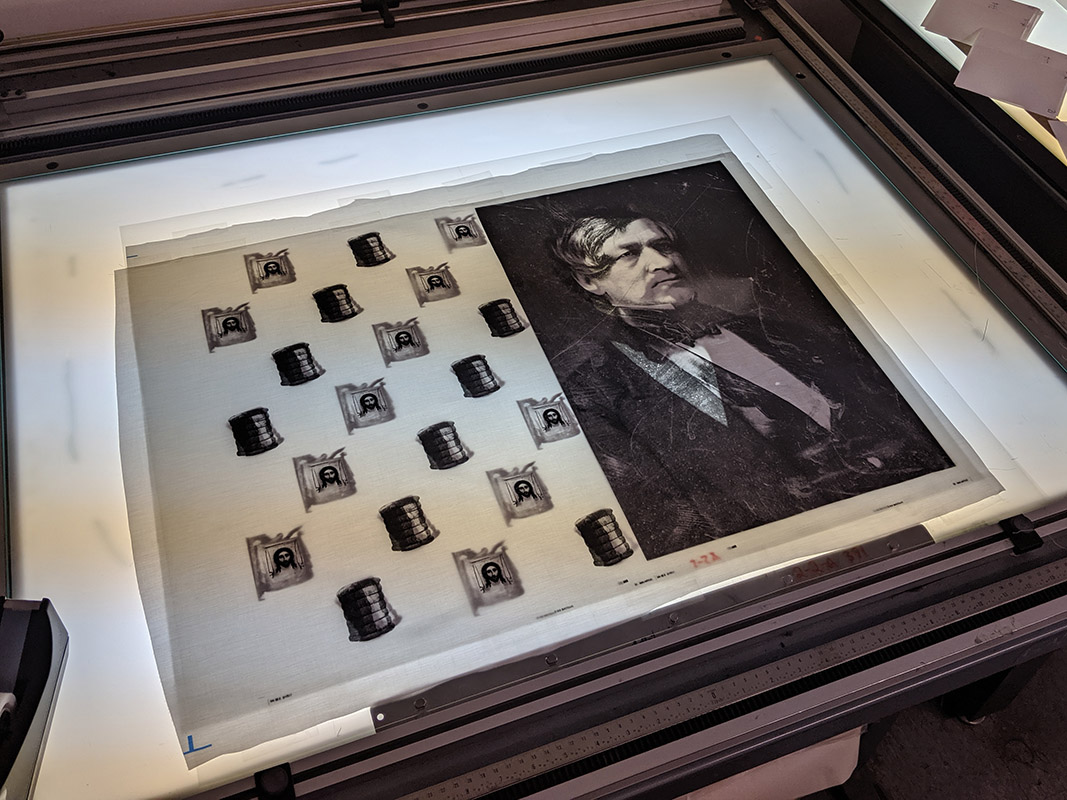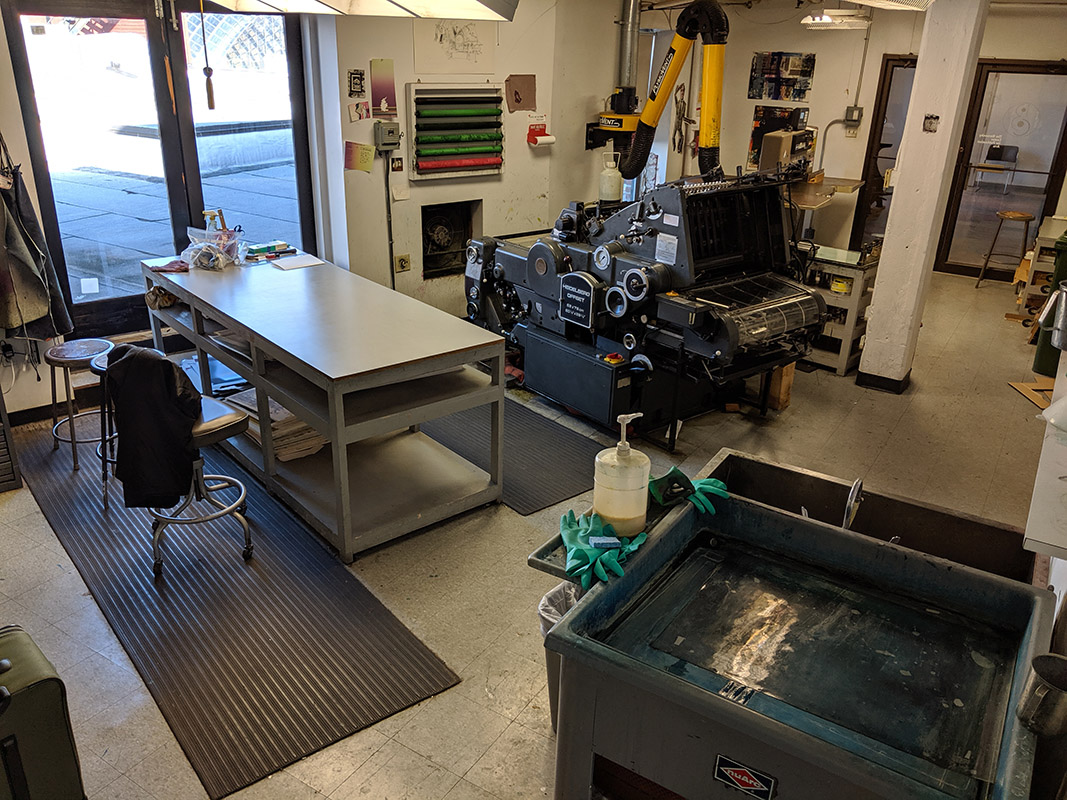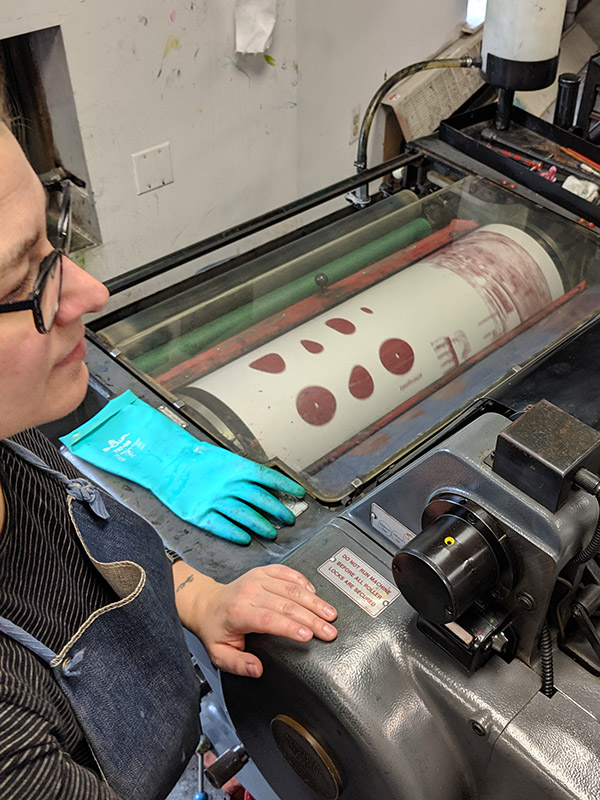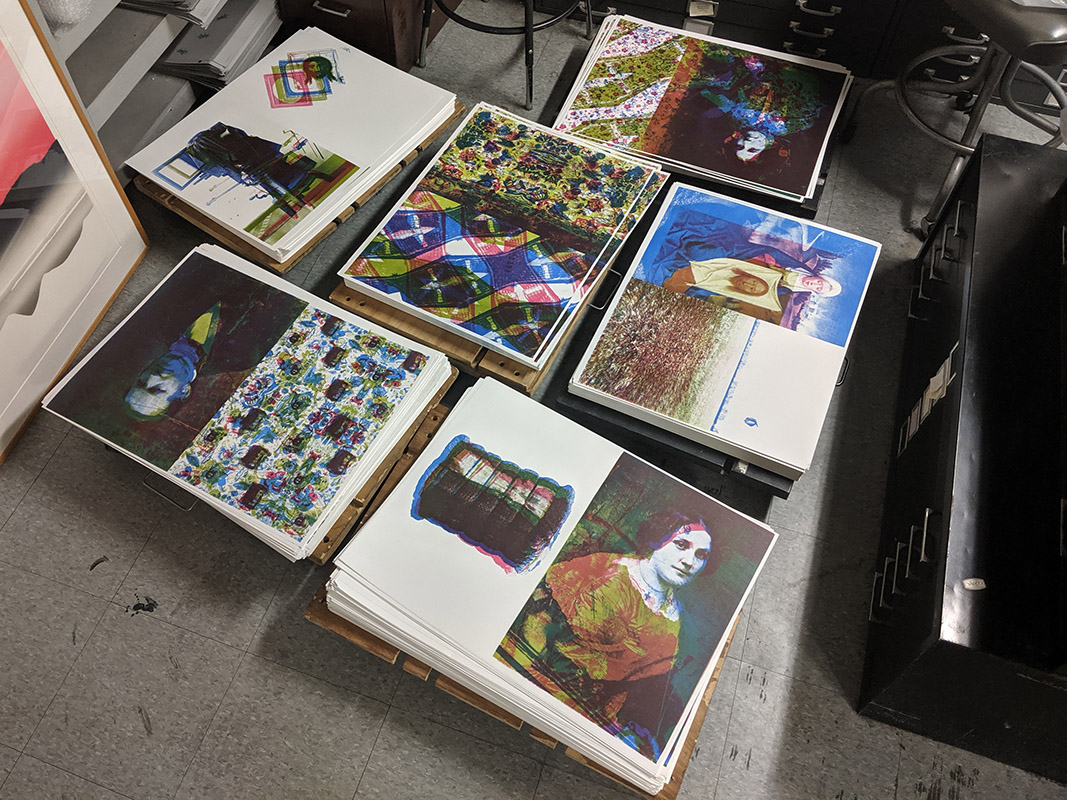Acheiropoieta and Concerning Acheiropoieta
A book in two volumes
Acheiropoieta is a book of experimentally printed offset-lithographed images that offers a visual discursion on themes of miraculous images, chattel slavery, cotton cloth production, the invention of photography, and the political nature of all images. A satellite book, Concerning Acheiropoieta, is a small book that textually reflects on the images in Acheiropoieta.
Acheiropoieta (which means “not made by hands” in Greek) are a class of Christian icons that are supposed to have come into being miraculously. Many acheiropoieta are textiles that purport to show the trace left when divinity comes into contact with cloth. In the Orthodox Christian tradition, their authority is unquestioned. The Shroud of Turin, the Veil of Veronica, and the Mandylion are all examples of images formed through physical contact with Jesus.
The portraits in Acheiropoieta are created from images of daguereotypes from the Matthew Brady collection in the Library of Congress. Brady—and others in his time—thought that looking at the likenesses of famous, accomplished people was uplifting, and conveyed moral virtue. Brady’s photographic studio contained a salon where dozens of his portraits were displayed, and the public flocked to see the faces of “the famous and historic” as he put it. I have selected multiple faces and recombined them to produce composite images where the sitter’s identity is replaced by a chimeric representation.
Religious claims aside, the idea that acheiropoieta are examples of unmediated images—images that are formed without any human intervention—is intriguing. Photographs and mirrors used to offer images that were assumed to be unmediated, images that had authority, but photography began to lose its role as trusted reporter very early in its history, and today’s digital editing techniques have made it clearly subject to authorial intervention. For a while, daguerreotypes did retain a certain veracity. Each one was unique, a particular record of a precise moment, a chemical rendering of an optical condition. The fact that they were made on highly polished silver plates—mirrorlike—made them seem as truthful as a mirror.
But even as they were seen as authoritative, mirrors have always been suspect—tools of the devil, windows into evil—and daguerrotypes are just another kind of mirror that is subject to the vision and intention of a maker.
The loss of meaning and trust in images has been a gradual descent into a world of immersive media, where meaning is a process rather than a destination. As artifacts of human contrivance, photographs now lack all authority, semblance of truthfulness, or unquestioned meaning; they seem contingent, lacking any center or substance. In fact, most photographs today have no physical existence at all. I am interested in how images might be made to seem unmediated, how they might be made to revert to a kind of solidity.
Woven cloth forms a raster, a grid of threads that forms a fabric. When seen by transmitted light, the warp and weft of the cloth form a variable density grid—which calls to mind a halftone contact screen, a predigital technology that translated continuous tone images into fields of halftone dots in order to simulate tonality. In this project, I created color separations of images, printed them through dye sublimation technology onto cotton cloth, and used those pieces of cloth to directly expose offset lithographic printing plates, which were then used to print three-color images. The weave of the cloth itself broke down the continuous tone images into dots of varying size. In a very literal way, I wanted to create a material metaphor to elaborate the idea of an acheiropoieton—where the lithographic shadows of the cloth images were multiplied into a book.
Acheiropoieta is a large book, 12 by 19 inches. Big books are public experiences—looking can be shared by several people at once. Concerning Acheiropoieta is a small book, 5 by 8 inches, barely hand sized; it is thus a private reading experience.





Printing at the Borowsky Center, University of the Arts with Amanda D’Amico and Matao Dreskin.

Chimeric portrait from three Brady daguerreotypes.
